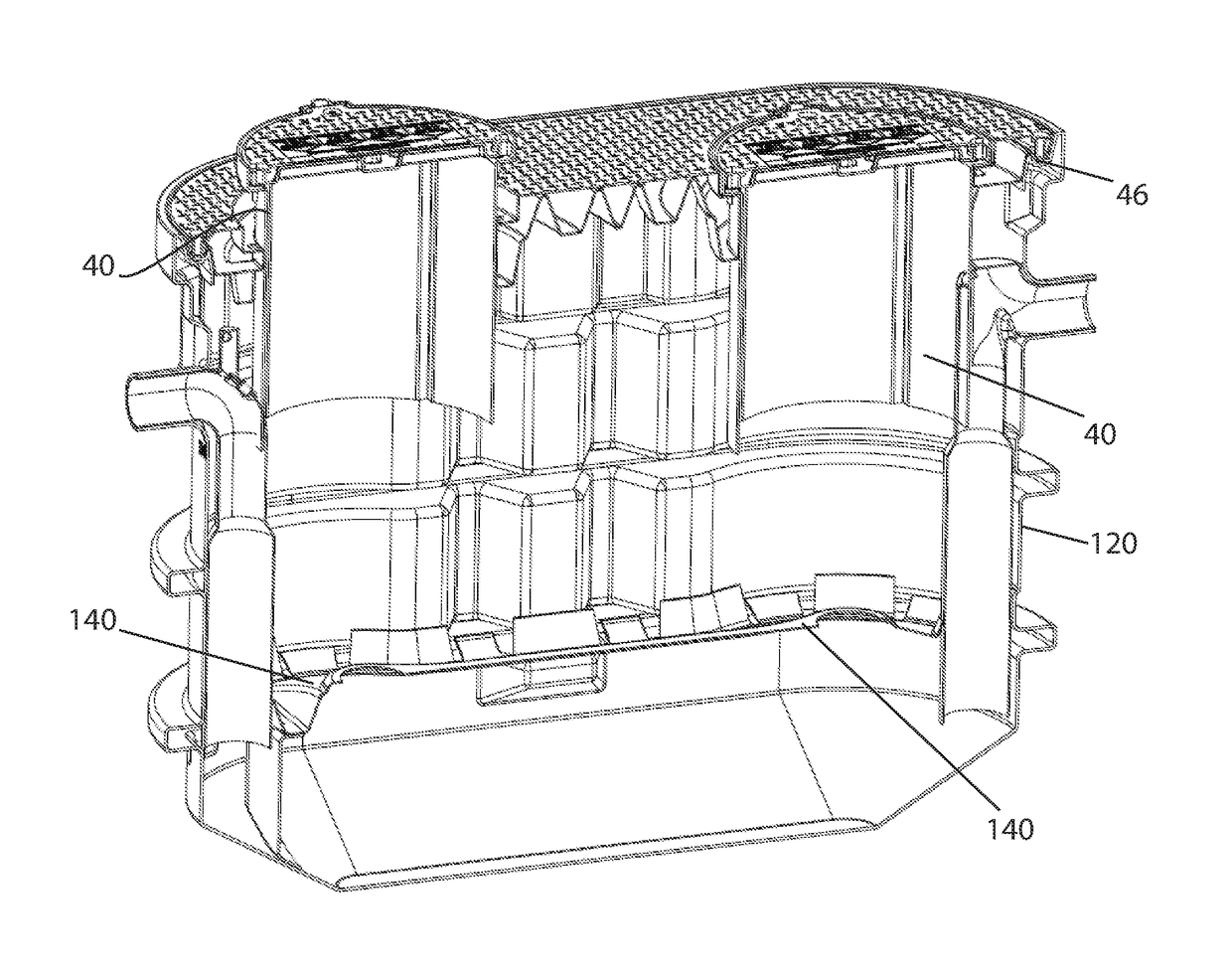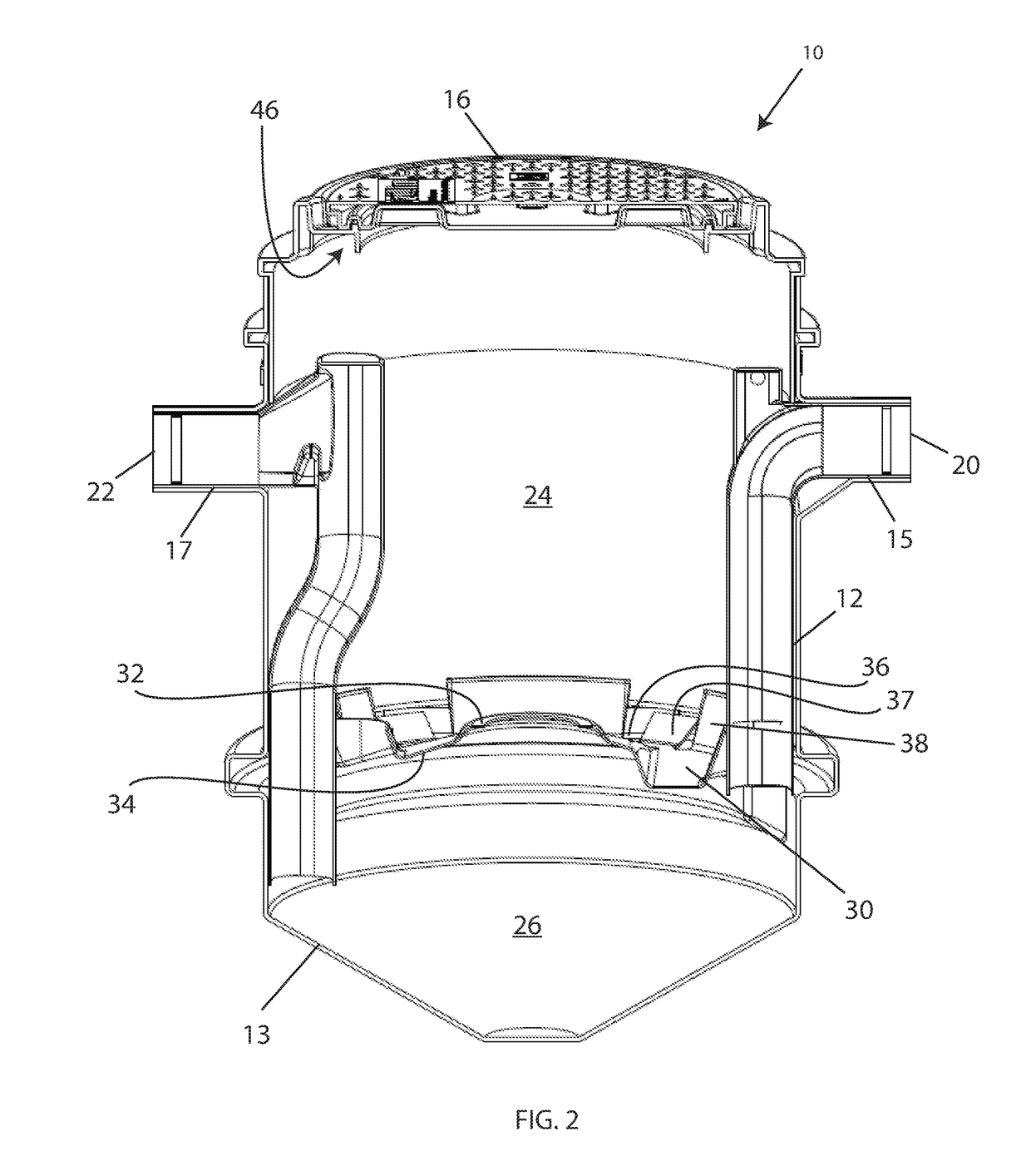Passive grease trap using separator technology
a separator and grease technology, applied in sedimentation settling tanks, separation processes, containers, etc., can solve the problems of waste to be expelled with grey water, intrusion and inconvenient for businesses, and waste tends to build up inside the tank
- Summary
- Abstract
- Description
- Claims
- Application Information
AI Technical Summary
Benefits of technology
Problems solved by technology
Method used
Image
Examples
Embodiment Construction
[0027]In the following description, like reference characters designate like or corresponding parts throughout the several views. Also in the following description, it is to be understood that such terms as “forward,”“rearward,”“left,”“right,”“upwardly,”“downwardly,” and the like are words of convenience and are not to be construed as limiting terms.
[0028]Referring now to the drawings in general and FIGS. 1 and 2 in particular, it will be understood that the illustrations are for the purpose of describing embodiments of the disclosure and are not intended to limit the disclosure or any invention thereto.
[0029]FIGS. 1 and 2 show a grease trap 10 for separating solids and grease from waste water. The grease trap 10 includes a tank 12 with a downwardly shaped bottom 13. In this embodiment, the downwardly shaped bottom is shaped like an inverted pyramid, but other shapes such as a conical shape, bowl shape, slanted plane, or the like, can be used. Preferably, the lowermost portion is ce...
PUM
| Property | Measurement | Unit |
|---|---|---|
| height | aaaaa | aaaaa |
| height | aaaaa | aaaaa |
| circumference | aaaaa | aaaaa |
Abstract
Description
Claims
Application Information
 Login to View More
Login to View More - R&D
- Intellectual Property
- Life Sciences
- Materials
- Tech Scout
- Unparalleled Data Quality
- Higher Quality Content
- 60% Fewer Hallucinations
Browse by: Latest US Patents, China's latest patents, Technical Efficacy Thesaurus, Application Domain, Technology Topic, Popular Technical Reports.
© 2025 PatSnap. All rights reserved.Legal|Privacy policy|Modern Slavery Act Transparency Statement|Sitemap|About US| Contact US: help@patsnap.com



